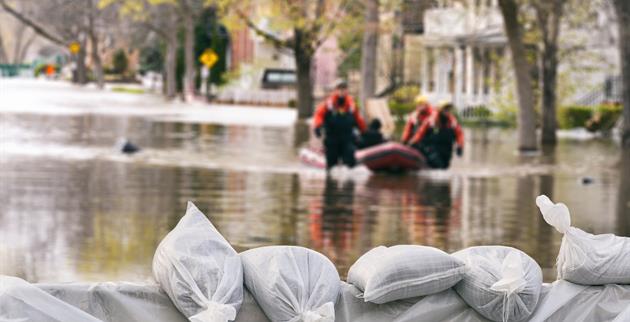How to Protect Your Small Business from Flooding


Take proactive measures to protect your business from the risk of flood, to ensure that your business prevails.
How to Protect Your Small Business from Flooding
Extreme participation can happen anywhere and exceed expectations, often with little or no warning! That’s why it’s important to take advance measures to prevent or reduce the damage a flood can cause. Read on for tips on how to prepare your small business during extreme weather-related events.
While the National Weather Service is a reliable resource for tracking severe weather, flooding often occurs with little warning. Rising river waters after heavy snow or rainfall, the breaching of dams or levees, and flash flooding caused by sudden, excessive rainfall can have devastating consequences for business owners, including damage to buildings, loss of inventory, to debris removal and extensive cleanup, to total business interruption!
Know Your Flood Zone
By knowing your flood zone, you’ll have a better understanding of the risk of flooding in your area! No matter where your business is located, some risk of flooding exists. To find your community’s flood map, visit the FEMA Flood Map Service Center, then type in your address and search. You may view, print and download flood maps, open an interactive flood map (if available), and view all products related to your community.
Learn Your BFE
Learn the base flood elevation (BFE) for your business property to determine whether the elevation of your building’s lowest floor is above or below the BFE. Why does it matter? If below, you may want to consider elevating your structure to reduce the chances of flooding! Buildings should be at least three feet above the BFE, in the event of higher-than-expected flood levels.
Have a Business Continuity Plan
A business continuity plan is a strategy for recovering your business in the event of a natural disaster or other emergency. An effective business continuity plan builds upon four key steps:
1. Identify your risks or threats.
2. Identify your critical business functions and the processes and resources required to support them. This may include things like answering the phones, running key equipment and distributing your product or service.
3. Adopt controls to prevent an event or reduce its impact and severity. For example, you might keep copies of all paper and digital files in an off-site location or maintain critical equipment at a higher elevation such as the second floor of your building.
4. Test and improve your plan routinely, and train your employees on their roles in executing the plan.
The U.S. government’s Ready Campaign provides a suite of tools to help you prepare a continuity plan tailored to your business needs.
Purchase Flood Insurance
Most standard business insurance policies do not cover flood damage and the loss of income that can result. In other words, even if your business has a good insurance policy, a flood could wash everything away. However, you can purchase flood insurance via the National Flood Insurance Program (NFIP). NFIP offers up to $500,000 of protection for your commercial building and $500,000 for contents. If you live outside a floodplain, you may be eligible for a preferred risk policy with a much lower premium than policies for higher risk areas offer.
It’s important to note that NFIP offers coverage for business property only; it does not provide protection for loss of income if your business is closed for a period of time following a flood. This can be a serious concern for small business owners who do not have large reserves set aside for unexpected downtime. If this is a concern for you, excess flood insurance may also be available for properties valued above the NFIP limits to which business interruption coverage may be added.
Prepare Your Property
Basements are vulnerable to flooding because water can flow down into them and seep through walls when the surrounding ground is saturated. If your business has a basement, these measures can help reduce the damage a flood can cause:
- Inspect your basement for evidence of water entry. Caulk any cracks on interior walls, extend downspouts and re-grade the landscape so water runs away from the building.
- Install a sump pump to protect against seeping groundwater or minor floods. A battery-powered model will operate even when the power is out.
- If water is a recurring problem, apply a waterproof sealant to foundation cracks, framing joints and the floor. For a longer-lasting remedy, you may need to install a drainage system and a waterproof membrane around the perimeter of the foundation.
- Move valuable equipment, papers and inventory to a safer location, such as a second floor or attic.
To reduce the risk of health and environment damage:
- Anchor your fuel tanks. Unanchored tanks can float away and release fuel during a flood.
- Install sewer backflow valves to prevent sewage from backing up into your building.
- If your business uses well water, a licensed well drilling contractor can advise on ways to protect the well from contamination.
Flooding is a common challenge many businesses face. By taking proactive measures and insuring your business against the risk of flood, you can minimize potential damage a flood can cause — and help ensure that your business prevails.
This information is intended for educational purposes only and is not legal advice and/or an authoritative guide.